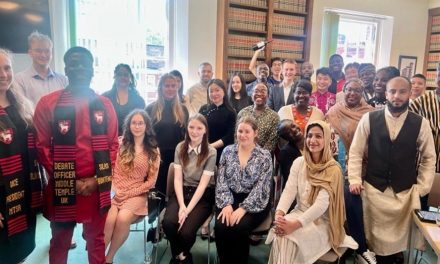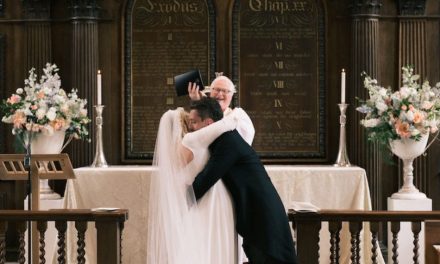The Evolution of Jury Direction Manuals – Where Next?
The following article is an abridged and edited version of Master Ormerod’s Reading as Autumn Master Reader 2022, delivered at his Reader’s Feast on Tuesday 15 November 2022.
My thanks to Master Treasurer.
This evening I wish to examine the evolution of the jury direction manuals in England and Wales. The latest iteration is the familiar ‘Crown Court Compendium’. Over the last 30 years these ‘specimens’, ‘models’, ‘examples’, ‘illustrations’ of directions to be delivered to the jury have come to be accepted as an important aspect of every Crown Court trial. I plan to explore how they evolved over the years, and, crucially, what scope there might be for further development.
In doing so, I will be summarising parts of an article that I have been co-authoring with a good friend Dr Hannah Quirk who is a Reader at King’s College London and an academic fellow of Inner Temple. I am delighted she is here. Thanks also to my colleague Professor Cheryl Thomas from UCL who I am sorry to say is not able to join us, but whose work I will be drawing upon – which is not to say that she would endorse any of my conclusions.
I am aware that there may be some members present who are not criminal lawyers – those who thought they were booking for Guest Night or Revels and are now just hoping that they will: (1) stay awake, (2) understand some of what I am about to say, and (3) that it will be brief ….rather like any jury listening to Master Treasurer summing up. For your benefit in particular, my conclusion is that we can do more to assist judges in communicating with jurors so that they understand the evidence in the case and their responsibility in evaluating it to reach a verdict. To do that, we need more research.
I accept that in terms of jury understanding there may be some juries beyond reach. I was told by one judge recently of a note he had received from a jury after several hours of their retirement in which they asked – ’can you just remind us whether the defendant pleaded guilty or not guilty?’
Similarly, there will be instances when the judge is beyond redemption in communication skill. I recall in pupillage Master Arlidge recounting to me a case involving a robbery in which the getaway vehicle was a Suzuki – at that time a less common make of vehicle than on the streets today. The trial judge had failed to grasp the pronunciation and despite valiant, repeated attempts of counsel proceeded to direct the jury that ‘the offenders ran from the premises and leapt into their jacuzzi to make their escape’. The jury were unphased by this, nodded knowingly to counsel and retired. They knew what he meant!
More seriously, before tracing the evolution of the manuals, it is worth emphasising why jury directionsare so significant in the criminal trial.
Put simply, they are vital as a matter of law. Following the European Court of Human Rights in Taxquet v Belgium, the judge’s directions to the jury delivered in open court compensate for the jury’s lack of any reasoned judgment when returning the verdict.
So much for directions, what is the significance of the manuals – the Crown Compendium being the current iteration.
The Compendium clearly assists the judge in a number of ways;
- To get the law right. The volume and complexity of criminal offences and evidential rules and the growing body of soft law (such as guidelines and protocols) means that it is impossible to expect any trial judge or advocate to have at their fingertips all the relevant guidance that may need to be explained to jurors. This is especially true of the Recorder who may have a non-criminal practice.
- The compendium therefore provides support to, and boosts the confidence of, inexperienced judges;
- It also assists all judges in communicating with the jury. One of the unique aspects of criminal judgecraft in the Crown Court is that it requires collaboration with a lay decision-maker – the jury – (something I am exploring in a lecture next term). All judges in the Crown Court therefore need excellent skills in communicating with the jury. They need to establish a working rapport with each jury. Sometimes the rapport can develop rather too well – as evidenced in the case where the jury in a murder trial sent a note to the judge reporting that they intended all to wear Christmas jumpers the next day and checking whether he had any objection to that plan. It could have been worse – they might have asked if we wanted to do the same.
As important as the assistance to the judge, is that the Compendium helps jurors:
- We owe them that. Given that they are conscripted to perform their onerous role, the criminal justice system is surely obliged to provide every assistance in performing it well. And there is no doubt as to the degree of help necessary given the number and technicality of the directions that must be provided to juries in even the simplest of trials.
- Furthermore, scholars have argued that greater clarity of directions promulgated in manuals such as the Compendium has a profound influence on the way that jurors experience the trial, enabling them to become ‘participants’
- The Compendium may even ‘inspire in jurors respect for the judge and his or her expertise, and impress upon jurors the power of the law and the need to approach their task with seriousness of purpose.’
There is an array of other reasons for jury direction manuals including:
- Their promotion of consistency in the legal directions;
- The avoidance of local practices;
- Efficiency gains from judges not having to craft directions from scratch for each case;
- Benefits to advocates with advance awareness of likely directions;
- And benefits to the CACD in being able readily to assess an individual trial judge’s approach against an ‘industry norm’.
- Not to mention the reduction in the likelihood of jury questions and associated problems those generate;
They are so often problematic at any stage. A judge told me recently of a note from a potential juror at start of trial; ‘does it make any difference that I am the mother of the co accused who has pleaded guilty?’
And I am sure those present who sit in the Crown Court have questions they love or loath.
Sometimes they are wholly unpredictable as where a jury in a nasty stabbing carried out by a car passenger in an attack on a man on the street. The jury sent a note asking if the car was automatic. The judge and counsel left wholly bemused.
Directions are vital and so are jury direction manuals. Let me turn briefly to examine the evolution of those in England and Wales, which led us to the present Crown Court Compendium.
Tracing the history
May 1991 saw the publication, under the auspices of the Judicial Studies Board, of the Crown Court Benchbook containing the ‘Specimen Directions’. It appeared to be primarily focused on assisting judges to get the law right. It was, in part, a training manual.
It was republished regularly with updates and refinements, but by 2008 it was recognised that too many judges were simply reciting the specimens without making adequate attempts to tailor them to the needs of the particular case. I have often wondered in how many trials did that long and soporific direction on adverse inferences cause the inattentive judge to include in the jury direction ‘this page deliberately left blank’ or ‘insert name of defendant’.
As Lord Judge explained ‘sometimes the specimen directions have been incanted mechanistically.’
In March 2010, these Specimen Directions were replaced by the 395-page Judicial Studies Board Crown Court Benchbook: Directing the Jury. I was privileged to have been involved in the drafting of that tome with the late and sorely missed Master Pitchford.
It marked a sea-change. It sought to deter ritualistic incantation of the directions, making it more difficult to do so by providing only ‘illustrations’ based on hypothetical facts which were ‘not amenable to being used as templates.’ This explicit expectation that judges would craft bespoke directions in every case underlined the greater focus on assisting jury comprehension. The Pitchford Benchbook represented a reprioritisation. In the opening paragraph of Chapter One it was explained that:
The more we focus upon jurors needs in the management and conduct of trials, and in summing up, the better able the jury will be to perform their tasks accurately and confidently.
It is no coincidence that the work followed hard on the heels of Cheryl Thomas’s empirical research exposing disturbing evidence of the paucity of juror comprehension of the directions in criminal cases. When given oral directions on self-defence, only 31% could identify correctly the two legal questions they had to address; equally, if not more worryingly, only 48% could do so when provided with the guidance in writing. That is worth repeating… less than half the jury could recall the correct questions. Professor Thomas’s research served as a catalyst for judges to take more seriously the responsibility for effective communication with the jury.
Whilst the focus on maximising juror comprehension was welcomed, the reaction of the judges at whom the book was aimed was lukewarm. Many judges held the view that the Benchbook expected too much by requiring them to craft their own directions in every case – some were too busy, some were inexperienced, and some were both. I will not ask for a straw poll among the judicial members as to which category they fell into.
Just two years later the Judicial College (as the JSB had then become) produced a quite different form of guide: The Companion, which was to ‘complement’ the Pitchford Benchbook. It focused exclusively on setting out elements of directions in bullet point form with no specimen or example directions offered.
By 2014, it was obvious that ‘a mildly dysfunctional system’ was in operation. There were three sets of jury manual in circulation (at least in practice). The decision was made to publish a new manual providing a single point of reference. By 2016, the team comprising myself, Sir David Maddison, a vastly experienced High Court Judge, and Circuit Judges Simon Tonking and John Wait produced the Crown Court Compendium. Many months of drafting by committee took place.
We met at Stafford Crown Court on the final Friday of each month. As an aside, you are all fortunate indeed to have had such a beautiful menu this evening. A few weeks ago, the Inn contacted me to ask whether the Archivist might assist in drawing together a menu to reflect the theme of my lecture. My immediate thought was for the preferred Friday option in the judicial dining room at Stafford: scampi and chips.
Although the Compendium sought to strike the balance between providing judicial confidence and juror comprehension, there were some significant developments demonstrating continued commitment to enhanced juror comprehension. The most obvious manifestation of this was in the explicit endorsement of the practice developed by some judges since the mid-1990s of providing written directions to juries.
All of this, it should be noted, has been achieved by the judiciary. Unlike some jurisdictions there is no statutory involvement.
Where we are
Viewed from this historical context, the judiciary is to be congratulated on having developed, within a relatively short space of time, a manual of jury directions that is cited every day in almost every case in the Crown Court.
- The volume of guidance is more comprehensive than ever.
- The Compendium has been repeatedly endorsed in positive terms by the Court of Appeal;
- It provides confidence to the judges in the Crown Court;
- The compendium has been accepted by the Crown Court Judges… It is no mean feat to persuade someone who has been directing juries and/or hearing them directed for their entire career that they should routinely follow someone else’s guidance
- In addition, I believe, the Compendium has had an impact in reducing the number of appeals because judges now routinely share with advocates their proposed written directions.
- It has demonstrated that it can be routinely updated in response to changes in law and other circumstances as with directions on Covid; myths and stereotypes in domestic abuse; how juries should approach their deliberations and so on. A team of editors led by HHJ Martin Picton updates regularly.
What we know and don’t know
Having examined the evolution of the Compendium and its continual refinement, it is important to ask next how we might optimise its uses. We must avoid complacency. We cannot assume that the jury direction manual is optimal unless we have a comprehensive understanding of (1) what assistance judges need and value and (2) how judicial directions can best serve jurors in terms of their form, delivery, accessibility, length etc.
I am not focused today on exploring how the editorial team might expand to incorporate other specialists offering guidance on forensic linguistics, psychology, communication. Some jurisdictions have teams including such specialists and some have even invited former jurors onto the Editorial committee and have highly prized their involvement.
So, what do we know?
What we know is that jurors welcome the guidance they are given, and in particular written directions. Professor Thomas’s research confirmed that 100% of those jurors who had received them found them helpful; 85% of those who had not, wished they had. That is an interesting figure. Thomas Jefferson is attributed as having said:
If you want something you’ve never had You must be willing to
do something you’ve never done.
These reports of the popularity of written directions with jurors has led to their widespread adoption by the judiciary. As the current Crown Court Compendium states:
Recent surveys with judges at Judicial College courses have revealed that over 90% of judges now use written directions some of the time, although there are differing views about how often, when and what form written directions should take.
Although those surveys are by a show of hands, so risk being skewed by ‘social desirability bias’, for the non-academic members that is not wanting to stand out by taking a stance that might not be perceived as appropriate.
What don’t we know?
Much more research is, I suggest, now necessary to secure a fuller picture of how and where improvements can be made. On this I commend the discussion by Dr Lewis Ross in his forthcoming paper.
We do not even know rather obvious things about the judicial use of the Compendium.
- Which categories of judge use the the Crown Court Compendium most often?
- In which types of case and why?
- How often do failures to follow the Compendium feature as a ground of appeal?
- Which aspects of the Compendium are most frequently cited by trial advocates etc.
- What areas of law are not currently covered in the Compendium which would be valued by judges?
We could acquire that information without controversy by anonymous surveys of judges and the Registrar of Criminal Appeal. And I would respectfully suggest that the LCJ should authorise such research and surveys.
It is also easy to identify things we do not know about how juries use the directions provided to them. An obvious candidate for scrutiny is the route to verdict – the ‘series of written factual questions, the answers to which logically lead to an appropriate verdict in the case.’
As form of written direction, routes to verdict have gained popularity with trial judges and with the Court of Appeal, being seen as ‘helpful’ ‘even in the simplest of criminal trials’, and to be applauded in serious cases. It has been assumed that routes to verdict bring unqualified benefits. Yet there is no clear empirical evidence in this jurisdiction to say whether jurors find helpful a route to verdict – as opposed to other forms of written directions. Recently, Scottish academics concluded from an extensive survey of research in other jurisdictions that:
The evidence that does exist (particularly from the better designed studies) suggests that these are more effective than written directions in improving applied comprehension – jurors’ ability to correctly apply legal tests to the evidence.
We should find out whether that is true in England and Wales.
Their impressive report repays reading in full. They also report that:
The empirical evidence suggests that the most effective ways of enhancing juror memory and understanding are juror note-taking, pre-instruction, plain language directions (including written directions) and the use of structured decision aids (routes to verdict).
We should check that for England too. But that is not all we should try to discover. There are many other good reasons why research is needed. There are some subtle issues involved.
Clearly, the jury being able to recall instructions is important. And with some jurors, memory is not their strongest suit… I was told by a judge of his bizarre experience when a juror, four weeks in to an eight-week trial, sent a note to explain that he needed a long weekend as he had forgotten that he was getting married and needed time for a short honeymoon!
But we need to look deeper than whether jurors are able when questioned to‘recall’ the directions they have been given. What really matters is understanding and ability to apply. Research work with jurors or shadow jurors or both needs to ascertain whether they can demonstrate any claimed enhanced understand and ability to apply the direction.
One question to be explored by researchers is whether providing jurors with clearer and simpler directions – as we have sought to do through the Compendium terms – has boosted their confidence that they have understood (their subjective perception that they have understood), without also enhancing their actual objective understanding and ability to apply the law? Some Australian research studies (with shadow jurors) have doubted whether objective understanding is necessarily increased by simplifying directions. As everyone here knows there is a world of difference between having thought you have understood the law and demonstrating you have done so by correctly applying it. Anyone who has attempted to rule on the definition of hearsay under s115(3) of the Criminal Justice Act 2003 knows exactly what I mean.
Do jurors really understand a set of directions or merely feel confident enough to report that they do?
The most recent research has emphasised that what matters most is actually whether jurors can apply the instructions. They may think they have understood them, but the litmus test is in application.
No matter how simple the issue and how often repeated, there is always a risk…A judge told me recently that he had given a majority direction and three times mentioned that this meant that verdicts of 10-2 were now acceptable. An hour later he was surprised to receive a jury question: ‘We are split 7-5. Is that a sufficient majority?!’
There are other, perhaps more troubling, issues still to be examined, particularly as we strive to make things as simple as possible with, for example routes to verdict. Sometimes perhaps we try to make things too simple – a risk alluded to in the recent judgment of the President of the King’s Bench Division.
Some research with real jurors in Australia reveals that:
When jurors are given more simplified instructions, they may feel more confident and so be less likely to scrutinize the evidence carefully.
The Australian research also found that:
A heightened perception that one understands the judicial instruction, and therefore the factors to take into account to arrive at a verdict, may result in less effortful information processing and more guilty verdicts.
And it revealed that in relation to instructions on the burden of proof for example:
increases in subjective understanding, but not objective understanding, were consistently related to a more favourable evaluation of the prosecution case and a more negative evaluation of the defence case.
It is important to note here that routes to verdict are always drafted to reflect the burden of proof. They pose the questions for the jury in terms of whether the prosecution has ’made them sure.’ Jurors whose confidence is boosted by the directions may be more ready to answer that they are ‘sure’ of what they are being asked.
There are, I acknowledge,numerous and very substantial caveats. Some of this is from one research team. Some from shadow jury work, some from very small samples with real jurors and almost all from different jurisdictions.
But research here is surely worth pursuing to ascertain whether these concerns have foundation in England and Wales. The research might, for example, involve cases in which the questions in the RTV were reversed. To take a simple example, rather than a route to verdict in a murder trial asking whether the ‘prosecution has made you sure that the defendant intended to kill or cause GBH…’ Experimentally the question could be posed, ‘if there is a possibility that the defendant did not intend to kill or do GBH he must be acquitted…’. It would be interesting to see often juries faced with that alternative reached different verdicts on the same facts.
An extensive research programme with jurors would also assist in understanding:
- whether directions on certain topics were better understood than others;
- whether different formats of presentation were better received than others etc. Are there, for example, some topics that are of such importance or so frequently prone to error that a specific formula could be prescribed with the expectation that judges will follow it verbatim. One example might be around burdens of proof.
- Research may lead to greater innovation with the possible use of PowerPoints, other digital aids, or pre-recorded material where these media are identified as maximising likely comprehension and enhanced capacity to apply the law. Matthew Caldwell, a doctoral student in computing at UCL goes so far as to say:
It is quite possible to construct a great presentation in PowerPoint – but expressive poverty is its default mode. Instead of enabling better communication, it actively encourages worse. It constitutes an alluring lexicon of banality, awkwardness, tedium and vacuous diversionary chrome. Even great communicators can be unwittingly trammelled by its hapless tropes; and most of us are not great communicators.
Many of the questions I have posed require us to research into real juries’ deliberations.
I believe it is vital to discover how jurors use directions in their collective deliberations. When the guidance is being provided to a team to be used in its collective approach to a process, it is important to understand how the team uses the guidance collaboratively in that task. For example, Routes to Verdict require jurors to work sequentially through a series of questions. It would be helpful to understand how the jury, as a group, followed those instructions.
As Dr Lewis Ross, at the LSE argues, current mock jury and post-trial research each have flaws. What we need is ‘real jury research’ which would:
provide us with high-quality information about juries and how they respond to different pressures that interfere with the pursuit of justice when deliberating about high-stakes and morally charged questions.
His paper repays reading in full.
There is, of course, a major stumbling block with much of the research that I have suggested. The strictures of the Contempt of Court Act 1981, s.8 make it a contempt of court to obtain, disclose or solicit any particulars of statements made, opinions expressed, arguments advanced, or votes cast by members of a jury in the course of their deliberations in any legal proceedings.
Section 8 prohibits asking real jurors how they used the directions in the course of their deliberations.
That provision has long been controversial. Notably, it was not recommended by the CLRC 10th Report on Secrecy of the Jury Room, but as an amendment to the 1981 Act was supported by CBA, LCJ and the Inns. Professor Thomas has rightly explained that it does not ban all research with those who have served as jurors – it merely prohibits questions about deliberations. Some hugely valuable post-trial surveys with jurors have been conducted without infringing Section 8.
In addition, shadow jury work has been done to answer some queries that cannot be addressed with real jurors because of the Section 8 prohibition. Shadow jury work has its drawbacks, but there are also methodological advantages, including meeting the challenge that jurors who have recently served are more likely to succumb to social desirability bias. In short, shadow jurors may be more candid.
But as I noted, we need to go further and research with real juries about their deliberations. Section 8 prohibits that.
Could safeguards be introduced that would render such research palatable if a legal way round Section 8 could be found? A Research Committee with input from the senior judges, HMCTS and MOJ etc. approved by the Lord Chief Justice, might authorise research in specified trials, with guaranteed anonymity. Admittedly, there would be a mass of fine detail to resolve. Ethics approvals, data security protocols, archiving of materials, agreed methodologies etc. I do not underestimate the difficulty of the task in creating a research programme of this nature.
Nor do I underestimate the difficulty in law of how Section 8 might be circumvented. There can be no amnesty in anticipation of prosecution granted by the judiciary, executive; nor can there be an anticipatory pardon. As Lord Hobhouse made clear in the tragic case of Diane Pretty, that all flows from the Bill of Rights – I mean the real one from 1689, not any modern-day imposter.
But are there other options? Can there be an undertaking given by the Attorney General as provided in relation to some public inquiries? Sometimes these undertakings prohibit use of anything said by the subject in any subsequent criminal trial, but sometimes they go further and prohibit use of the subject’s comments when deciding whether or not a prosecution should be brought, and they even prohibit the use of the statements in opening further lines of investigation for criminal proceedings. I consider it is possible to construct a robust research framework and to meet the challenge of Section 8.
I also do not underestimate the strength of likely opposition from (some of) the judiciary. Their concerns should be allayed. There may be a risk that the research might expose previously unknown, (potentially) unpalatable information about how juries really understand their decision making role. But if that happens, based on previous experience the outcome is positive. Remember that figure, that only 31% of jurors could recall the two questions they had been directed to apply. On previous occasions when embarrassing information was revealed (by Professor Thomas’s research), the criminal justice system responded and improved the process – by introduction of written directions etc.
Overall, it is hard to ignore the deficit of information and the risks of assumptions from verdicts and witnessing the juror’s conduct in open court and examine the way the jury understood and applied the Compendium in its deliberative processes.
I have argued that this is all necessary to optimise the Compendium. But let’s be honest, far more important than that, is that we understand how juries work so that we can place complete trust in the jury as the ultimate decision maker in our most serious criminal offences. We cannot afford to neglect this research.
Thank you.

David Ormerod is the Professor Criminal Justice at University College, London. He has been an academic lawyer for over 30 years. He has published widely on all aspects of criminal law, evidence and procedure. From 2010-2019 he was the Criminal Law Commissioner for England and Wales leading on all the criminal law reform projects.
He is a Bencher of Middle Temple, serving as Reader of the Inn in 2022, and has been involved in education there for many years. He is also a Bencher of the Inns of Court of Northern Ireland where he has frequently provided training.




